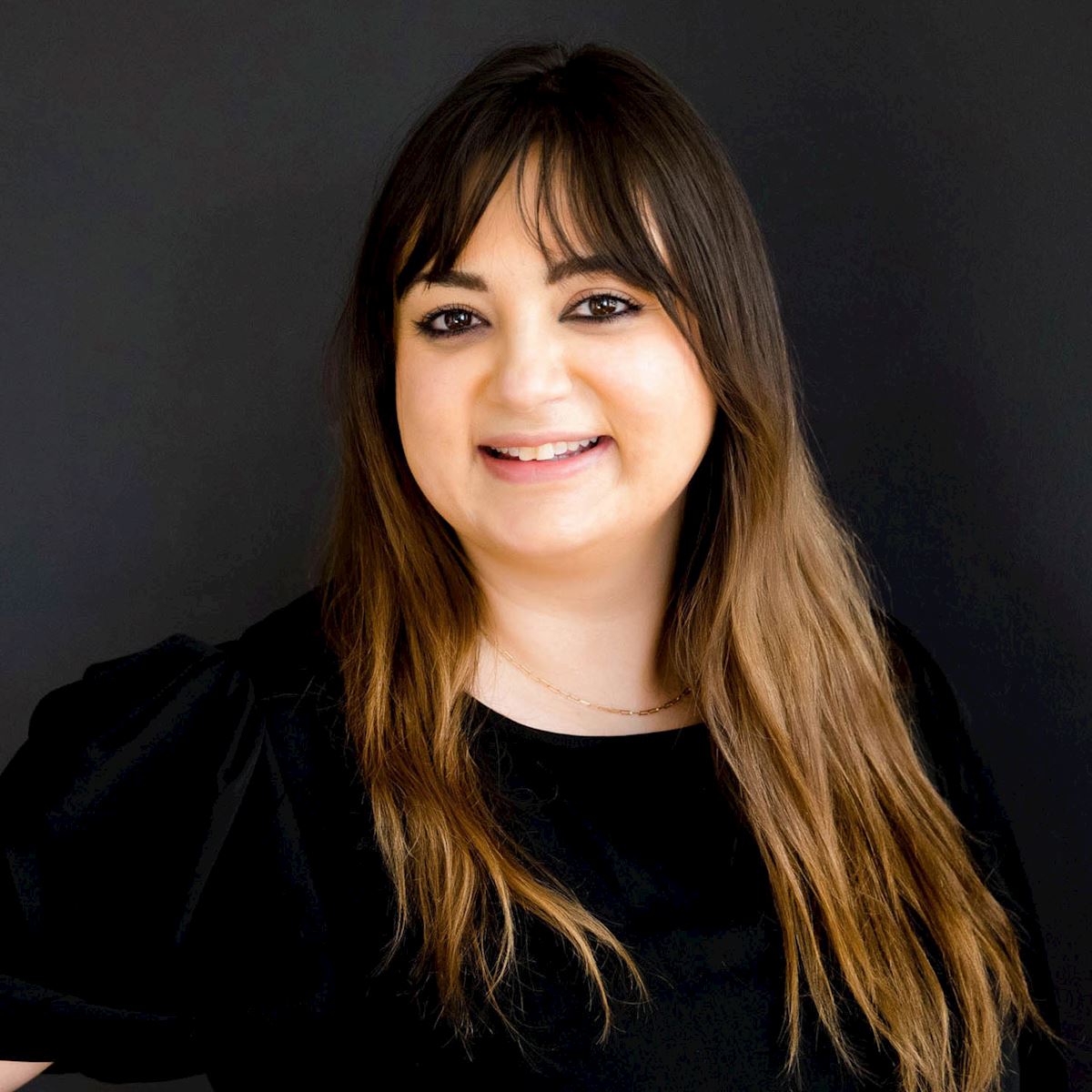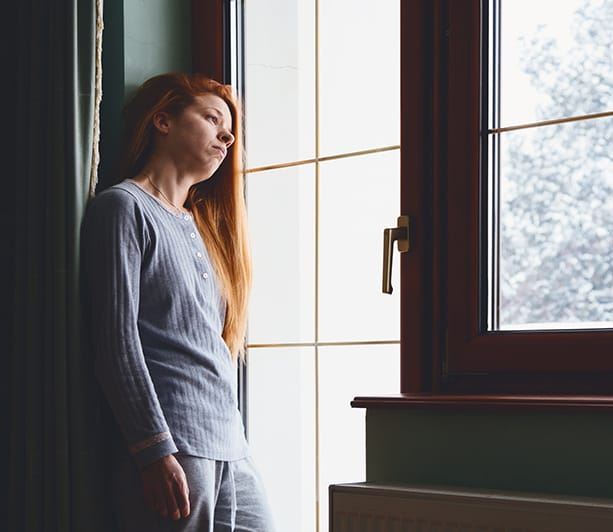Along with bone-chilling temps and piles of snow, winters in Des Moines bring a storm of emotions. Hatred of the cold. Fear of the weather. Anxiety about traveling in dangerous conditions.
Those emotions end with the cold snap. But sometimes depression, moodiness and exhaustion are in the wintry mix. And that’s a forecast for seasonal affective disorder.
Seasonal affective disorder — is that like seasonal depression?
One and the same. Seasonal affective disorder, or SAD, is a type of depression that relates to changes in the seasons. The symptoms are similar to depression, but they fade with the next solstice or equinox.
“Seasonal depression most commonly hits during the winter months, with symptoms appearing in the late fall and going away once the sunnier, warmer weather returns in spring,” says Huda Jarmakani, DO, a family medicine physician at The Iowa Clinic’s Ankeny campus. “However, some people have the opposite problem — their symptoms begin in the sunnier months of spring and summer, then go away in the fall and winter."
No matter which type of SAD you have, symptoms start mild but become more severe as the season progresses.
What SAD symptoms should I look for?
Because seasonal affective disorder is a type of depression, many symptoms can be mistaken for depression. The major difference is that with SAD, symptoms only plague you during a particular season every year. But depending on which season it hits, your symptoms may vary.
Symptoms of Winter Seasonal Affective Disorder
Winter SAD is the most common, affecting half a million people every year. Although up to 20 percent of people might experience a mild form of “winter blues” or “winter depression.” These symptoms occur between September and April, peaking in the winter months — December, January and February:
- Tension or inability to tolerate stress
- Lethargy or inability to carry out a normal routine
- Irritability and difficulty concentrating
- Tiredness and low energy
- Problems getting along with other people or no desire to be around others
- Hypersensitivity to rejection
- Extreme mood changes
- Heavy, “leaden” feeling in the arms or legs
- Oversleeping
- Appetite changes
- Weight gain or overeating
Symptoms of Summer Seasonal Affective Disorder
While this type of seasonal affective disorder is much less common, it can happen. If you struggle with summer-onset SAD, you may have these symptoms:
- Depression
- Trouble sleeping or insomnia
- Weight loss
- Poor appetite
- Agitation or anxiety
If you’re a young woman, you’re most at risk of having the symptoms of seasonal affective disorder. Three out of four SAD sufferers are women, and the main age of onset for this disorder is between 18 and 30 years of age.
What causes SAD?
We don’t know for sure. While a specific cause of seasonal affective disorder is unknown, these factors almost always play a part:
- Biological internal clock – Reduced levels of sunlight in fall and winter disrupt your circadian rhythm, which can cause winter-onset SAD.
- Serotonin levels – A drop in serotonin, a brain chemical that affects your mood, might play a role in SAD. Reduced sunlight can cause a drop in serotonin that may trigger depression.
- Melatonin levels – The change in seasons can disrupt the balance of the body’s level of melatonin, which plays a role in sleep patterns and mood.
 How do you know when it’s SAD, and not just the winter blues?
How do you know when it’s SAD, and not just the winter blues?
It’s all about the duration and severity of your symptoms. It’s easy to shrug off the symptoms of the seasonal affective disorder and attribute them to just having a bad day or week. But it’s important that you don’t ignore these feelings if they persist.
While it’s normal to have days where you feel down, a number of down days in a row is cause for concern. If you aren’t motivated to do the things you normally enjoy, your sleep patterns and appetite change, you feel hopeless to the point of suicide or you turn to alcohol for comfort or relaxation, it’s time to contact your provider.
Are there any treatments for seasonal depression?
There are a number of easy, everyday things that may help with your seasonal affective disorder:
- When you’re inside, sit near a window.
- Get regular, moderate exercise and physical activity.
- Eat a well-balanced diet.
- Find time to get outside each day.
- Practice relaxation techniques, avoid stressful situations and take other steps to manage your stress.
“Try to get as much natural sunlight as possible. As it gets cold outside, bundle up and take a brief walk over lunch, when the sun’s at its highest,” Dr. Jarmakani advises. “Indoors, make your work and home environments as light and airy as possible.”
Light therapy is actually one of the most effective treatments for SAD. If you can’t get outside in the daylight, you can try a SAD lamp, which uses bright, fluorescent light tubes in a special light therapy box to mimic natural outdoor light. SAD light therapy appears to activate brain chemicals linked to mood.
Sometimes there’s nothing you can do that will get you out of your seasonal slump. That’s when it’s time to make an appointment with your physician. Prior to your appointment, make a list of your symptoms — be as detailed as you can, with examples. This will help your provider determine the severity of your situation for diagnosis and treatment. In some cases, antidepressants or other medication may be prescribed or used in combination with light therapy.
“Antidepressants that are often prescribed to treat depression are also used to treat severe cases of seasonal affective disorder,” Dr. Jarmakani says. “They can be most effective at the start of winter before symptoms appear and when continued until spring.”
Selective serotonin reuptake inhibitors (SSRIs) are preferred, she says. They increase the level of the hormone serotonin in your brain which can help lift your mood. Your primary care provider can help figure out which options are best for you.
 What now?
What now?
As the days get short, dark, gray and gloomy, pay special attention to symptoms of seasonal affective disorder. Take note of your overall mental health. Monitor any mood changes, exhaustion, feelings of depression and other symptoms — especially as fall fades and the darker, colder days come. Then, tell people how you’re feeling.
“It can be helpful to talk to your family and friends so they understand how your mood changes during the winter. This can help them support you more effectively,” Dr. Jarmakani says.
When your SAD feelings won’t go away or only get worse no matter what at-home tricks you try, talk to your primary care provider to find a cure for your winter blues and depression.


